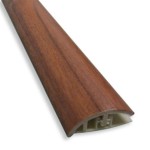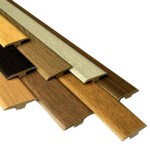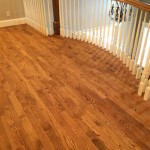Vinyl plank flooring is an increasingly popular flooring choice for homeowners due to its long-lasting durability, easy installation, and attractive appearance. Before installing vinyl plank flooring, however, it is important to properly prepare your home for the installation process. In this article, we’ll provide a comprehensive guide to vinyl plank floor prep, so you can be sure your floor installation is of the highest quality.
Inspect Your Subfloor
The first step in preparing for vinyl plank floor installation is to inspect your subfloor. It is important to make sure that your subfloor is in good condition and able to support the weight of the vinyl plank flooring. If there are any areas of the subfloor that are damaged, these should be repaired before installation begins. Additionally, check for any uneven areas of the subfloor, as these should be leveled before installation.
Clean the Subfloor
Once your subfloor has been inspected and repaired, it is important to clean it thoroughly. Make sure to sweep and vacuum the entire surface of the subfloor, removing any dirt, dust, and debris. It is also important to remove any paint, adhesive, or other residue that may be on the subfloor, as this can interfere with the installation process.
Acclimate the Vinyl Plank Flooring
Before the installation process begins, it is important to acclimate the vinyl plank flooring. This process involves allowing the flooring to adjust to the temperature and humidity levels of the room. It is important to follow the manufacturer’s instructions for the best results, as this can vary depending on the type of flooring used. Generally, the flooring should be allowed to acclimate for a minimum of 48 hours before installation begins.
Lay the Vinyl Plank Flooring
Once the subfloor has been inspected, cleaned, and the vinyl plank flooring has been acclimated, it is time to begin the installation process. Start by laying the flooring in the center of the room and work your way out towards the walls. Make sure to leave an expansion gap of at least 1/4 inch along the walls and other fixed objects, such as cabinets, for proper installation.
Trim the Vinyl Plank Flooring
Once the vinyl plank flooring has been laid, it will likely need to be trimmed in order to fit properly. This is done using a sharp utility knife and a straight edge, such as a square or ruler. It is important to take your time and make sure that the cuts are precise in order to achieve a professional-looking finish.
Secure the Vinyl Plank Flooring
Once the vinyl plank flooring has been trimmed, it is time to secure it in place. This is typically done with a combination of adhesive and nails. Make sure to follow the manufacturer’s instructions for the best results. Once the flooring is secure, it is important to inspect it for any gaps, gaps, or other imperfections before the installation is complete.














Related Posts









